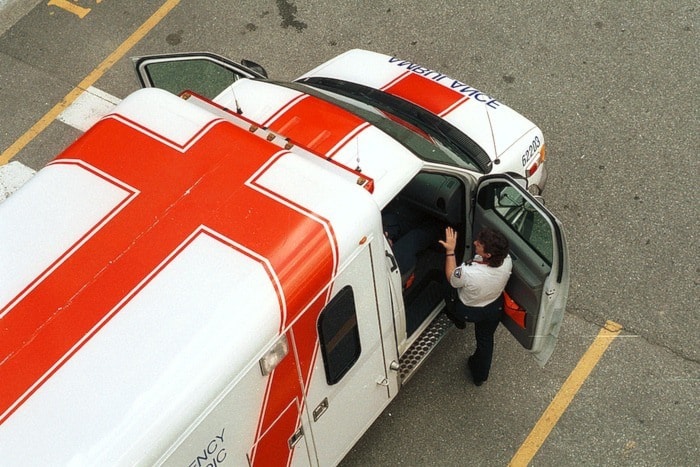B.C. firefighters say a downgrade in response priority for less urgent medical calls by the B.C. Ambulance Service has resulted in much longer waits for paramedics to arrive.
A reallocation of ambulance service last fall shifted dozens of call types B��Ԫ������ַ� often for broken bones and other incidents where the patient is medically stable B��Ԫ������ַ� so that those ambulances now roll at posted speed limits without lights and siren, rather than code 3 at high speed.
Officials say it's meant an average of six minutes slower arrival times to those calls, but allowed one minute faster average responses to urgent life-or-death emergencies like heart attacks, while reducing the risk of high-speed crashes between ambulances and other vehicles.
B.C. Professional Fire Fighters Association president Mike Hurley said that doesn't match what fire department first responders are seeing.
"Our experience in the field is it's anywhere from 30 to 45 minutes and longer for an ambulance to show up," Hurley said of the downgraded calls.
"They've lessened the service to the citizens of each community."
He said the types of calls that are now dispatched at routine speeds include serious falls, serious hemorrhages and certain pregnancy calls.
They make up about nine per cent of overall ambulance calls, according to a report on the reallocation plan, and mean 800,000 fewer kilometres of lights-and-siren driving each year.
Dr. William Dick, vice-president of medical programs at B.C. Emergency Health Services, said the changes flow from a rigorous two-year expert review that assessed outcomes for patients and the risks of high-speed ambulance driving.
"It's safer to the driving public, it's safer for our paramedics and it's safer for our patients," Dick said Wednesday.
He likened the change to hospital triage policies that give the most urgent cases priority ahead of patients who can safely wait longer.
"We're doing the same thing they're doing in the emergency department but we're doing it on the street or in people's homes."
Dick said a rolling analysis of the changes has so far found no change in medical outcomes for patients whose call priority was reduced.
Several fire departments and municipalities have criticized the change.
A report by the Vancouver Fire Department estimates ambulance response times there are an average of 21 minutes slower and Burnaby has also a jump in long ambulance waits.
Dick said he believes reports of extreme waits are anomalies and none of the cases involve people in medical danger.
Several Metro Vancouver mayors say the service change amounts to by the province because firefighters who respond first end up waiting longer with patients, sometimes incurring more overtime as well.
"They are reducing quality of service,B��Ԫ������ַ� Port Coquitlam Mayor Greg Moore said. "Sometimes the patientB��Ԫ������ַ�s family has driven someone to the hospital, which is just not appropriate."
BCEHS maintains the changes are not a money-saving measure but are strictly to improve care by speeding response to those in most urgent need.
And it contends municipalities could make smarter use of their own resources by redeploying firefighters to other services if they didn't opt to dispatch them to routine calls where first responders aren't medically required.
Mike McNamara, president of the Surrey Firefighters Association, said firefighters fear fire halls won't get dispatched to the calls deemed less urgent at all in the future, leaving patients to wait longer without aid.
"One crew waited over 45 minutes for a lady that fell and broke her hip," he said, recounting one recent incident of ambulance delay in Surrey.
Of particular concern, he said, are cases when a panicked 911 caller gives unclear information that results in an ambulance being dispatched at low priority to a call that proves more urgent.
"There is room for error there," McNamara said.
Because there are many more fire halls than ambulance stations, fire departments maintain they're uniquely placed to act as first responders with quicker response times.
"What happens when [dispatchers] get it wrong?" McNamara asked. "We're just down the street and it's a real emergency. We're just minutes away from helping this person and we're not going."
Dick said BCEHS is consulting cities on the changes and promised a further review of the results.
He said there are no plans to exclude fire halls from low priority calls if the local city still wants its firefighters to respond to provide "comfort care" while awaiting an ambulance.
"I will not arbitrarily cut anyone off," Dick said. "I question the wisdom of spending a really expensive resource when it's not required medically. But it's not my decision to make."
B��Ԫ������ַ� with files from Diane Strandberg



